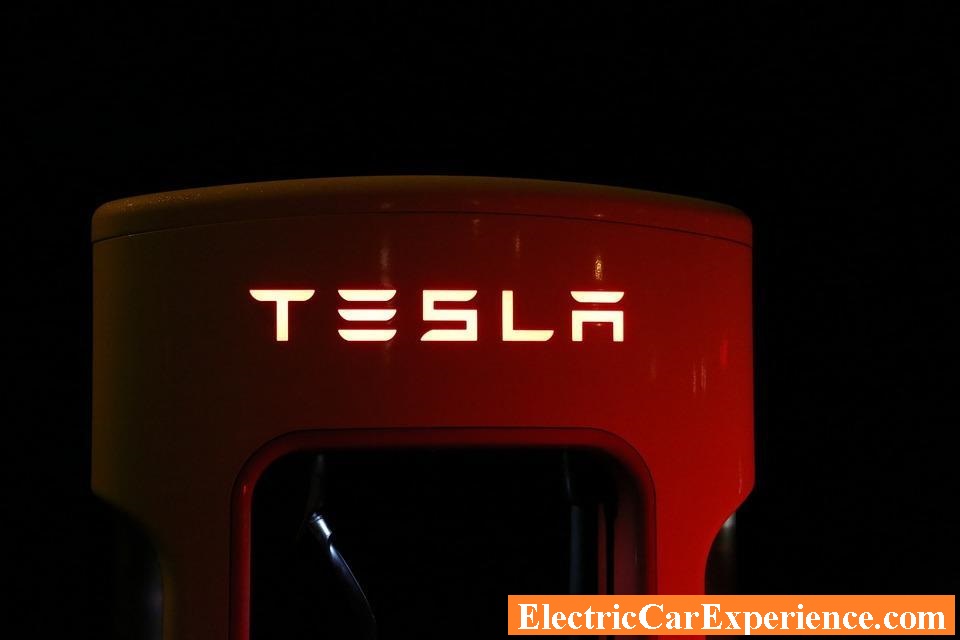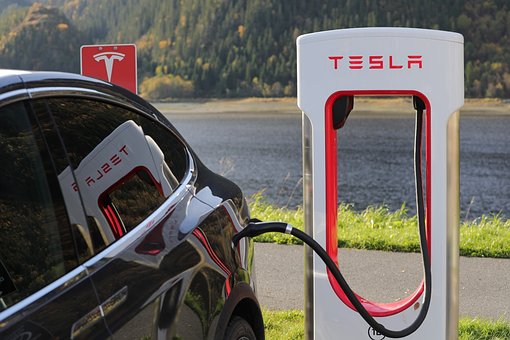With years passing by people are shifting to electric vehicles and with the advancement of technology, the range, and the charging issue are being revisited again and again. And at What Percentage Should I Charge A Tesla Battery?
There are rules and regulations all over the world, and if you are owning an electric vehicle, you should be well aware of the 80% rule. Most of the electric vehicles in the market are advised to charge 80%. But Tesla is pre-designed to charge to 90% to get the best performance of the battery. Level 3 chargers or DC chargers are fast chargers drawing 480 Volts and approximately take 30 minutes to one hour for any Tesla battery to charge. Charging speed dramatically slows down after this range and the longevity is also improved if the charging percentage is capped below 100%.
The two factors that are affected by charging are charging performance and battery longevity.
The table below shows The Charging Time of Various Tesla Models
| Models | Level 1 Charger (120 Volts) | Level 2 charger(240 Volts) |
| Tesla Model S | 72 | 6-8 |
| Tesla Model X | 72 | 6-8 |
| Tesla Model 3 | 35 | 3-4 |
| Tesla Model Y | 54 | 4.5 |
1. Default Charging Settings for Tesla
As soon as any Tesla model hits the road, the battery is pre-set to charge to 90% and should try not to fall below 20%. You must be wondering, on what grounds did Tesla set this rule without even knowing the lifestyle or the frequency of travel of their customers?
At 100% state of charge, regen braking doesn’t work, because the battery is full, so car is less energy efficient
Elon Musk
Regen is another name for regenerative braking. Regenerative braking is one of the salient features that is found in most vehicles.
It is a mechanism where the kinetic energy from the car is recovered back to the battery, reducing the draining rate and may help you to extend the range. Tesla’s regen technology works best within the charging range of 85%-95%.
How Frequently Should You Charge A Tesla Battery?

There is no hard and fast rule set by Tesla in terms of charging frequency. Most people have a notion to charge it overnight, but it totally depends on the traveling pattern of the customers.
The rule which is advisable to follow is to charge your vehicle to 90% and not more than that and don’t let it fall below 20%. In the USA, on average people travel 37 miles a day, in such cases alternate-day charging is more than enough.
How Long Does A Tesla Battery Last?
Range anxiety is one of the things people are worried about. But with the advancement of technology, Tesla is coming up with new inventions and improvements. But still, you don’t need to worry about any Tesla car. On a single charge, it can run at least 272 miles and the battery’s average life is 20-30 years.
Cost to Charge A Tesla Battery.
The cost of charging a Tesla battery depends on the battery capacity and the type of charger you are using. Here we will discuss and summarise the cost of charging various Tesla models along with the cost per mile.
The table below shows the Cost to Charge Tesla Electric Car Battery.
| Tesla Model | Battery capacity (kWh) | Range | Cost to charge a battery | Cost per 100 miles. |
| Model X | 100 | 351 | $15.29 | $4.40 |
| Model X Plaid | 100 | 333 | $15.29 | $4.59 |
| Rear-Wheel Drive Model 3 | 62.3 | 272 | $10.94 | $4.02 |
| Model S | 100 | 405 | $17.55 | $4.33 |
| Model Y | 75 | 330 | $13.16 | $3.98 |
Tesla Battery Retention for Various Models.
Tesla aims at high retention and low degradation battery capacity. The range and capacity of the battery depend upon various factors. It can’t be measured only by counting the number of years. Though Tesla provides a warranty on its battery for about 8 – 10 years, it also depends upon the running mileage.
From the past data, it was calculated that, after running for about 200,000 miles, the capacity of the battery degrades about 10-15% on average.
Model S and Model X
Both of the models basically use the 1865 format and are manufactured by Panasonic, Japan. After running for about 150,000-200,000 miles, the battery degradation is found to be less than 15%. You can get a better idea and analyze the data here.
Model 3 and Model Y, both are equipped with 2170 cylindrical cells and are having different suppliers (Panasonic, LG Chem, and CATL from China as well). We hope to get a similar kind of efficiency from these two models as well.
Types of Tesla Chargers.

Many people wonder how long it takes a Tesla battery to charge fully. Few people may claim it takes approximately 20 hours to charge fully, as the rate of charging decreases drastically beyond 90% while some claim that it can add a 200 – 250-mile range in just 15 – 20 minutes (supercharging).
Charging a Tesla battery depends on various factors, the type of charger used, the power source, the condition of the battery, etc.
First, let us have a look at the three charging options available:
120 Volt charger (Level 1)
These are the default charging options available and are included with every electric vehicle. These require the type of outlet available at your house when you plug in to charge a laptop or mobile phone.
They are very slow chargers that typically add a 4-5 miles range with one hour of charging, this is the lowest charging option available and is also advisable if you charge regularly.
240 Volt charger (Level 2)
It is a much faster charging option than Level 1, they require a power outlet at your home that you use for washing machines or refrigerators. They take the advantage of the circuit’s higher amperage and add a 14-15 miles range in just one hour.
These chargers are separately sold by Tesla for their electric vehicle which also comes with an adaptor J1772 port so that their customers are able to use public charging ports of level 2.
480+ Volts DC Charger (Level 3)
The previous Level 1 and Level 2 chargers use AC current and as the name suggests Level 3 uses DC current. These types of chargers can add up to 100 miles per hour of charging.
They are usually not recommended for home charging as they require separate hardware and permits. It is not advisable to use DC chargers because it damages your battery’s health, decreasing its lifespan. Use a DC charger only, when necessary, while on a long trip.
Conclusion
As discussed in the article the depletion of charge depends on various factors, the distance traveled the climate, and the highway conditions. In the same manner, the charging speed also depends on the charger used, public or home charging, frequency of charging, battery life, power available, etc.
Tesla advises its customers to charge at 90% as frequently as possible and prefers home charging to get the best charging experience of its electric battery. Do not wait till the electric battery gets fully discharged and is not below 20%.
Level 1 and Level 2 chargers are the best to use, they are easily available at home and also help in increasing your battery lifespan.
FAQs
Best charging plans for the electric battery to keep it for years?
Automakers suggest that electric batteries should be charged somewhere around 50% to 80% as frequently as possible. Tesla suggests their customers charge a range of 90% in case of daily commutes and for long drives they may go for 100%.
Should one wait for the whole charge to deplete?
Tesla specifically uses lithium-ion batteries so you need not wait for depletion. It is advisable to charge daily or as freq
Why are supercharging charges so fast?
Supercharges charges directly up to 120 kW using direct current, skipping the onboarding charger of the vehicle. This kind of charging needs special installation and permits which is not usually available at home.
Is it possible to use public superchargers to charge electric vehicles?
Yes, but try to avoid public charging. You will get the best experience at home wall charging.
What is meant by destination charging?
Tesla tries to install charging options in various hotels and restaurants so that people can charge while traveling or on vacations, away from home.
Are Tesla public charging free?
Unfortunately, the answer is No. The public charging stations mostly use DC chargers which are the fastest and costliest mode of charging.
Posts Related to Electric Cars and Batteries
- Top 10 reasons why Solid-State batteries are better than Lithium-Ion batteries in EV-A complete guide 2024
- What Does an Electric Car Battery Look Like?
- Tesla Model X 12V Battery Replacement-Complete Guide 2024
- Can A Damaged Piece of Electric Car Battery be Repaired?
- What happens to old electric car batteries? can they be recycled?
- How Long Should a Dead Chevy Bolt Euv Battery be Charged? -An ultimate guide 2024
- Can Electric Car Batteries Explode?
- Does a Lithium-Ion Battery Make Electric Car Expensive?
- Chevy Bolt Battery Health After 1 Year After 2 Years After 5 Years
- Top 9 Ways To Reduce Charging Time For Electric Car
- Tesla Beeping Sound While Parked – (Tesla Model 3, Model X, Model Y, Model S)
- Chevy Bolt Battery Degradation
